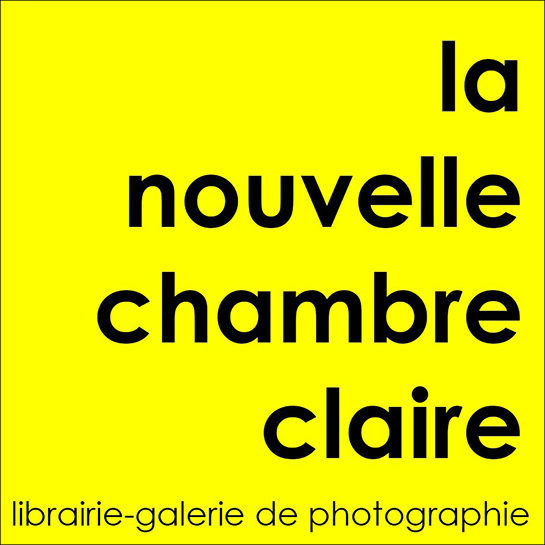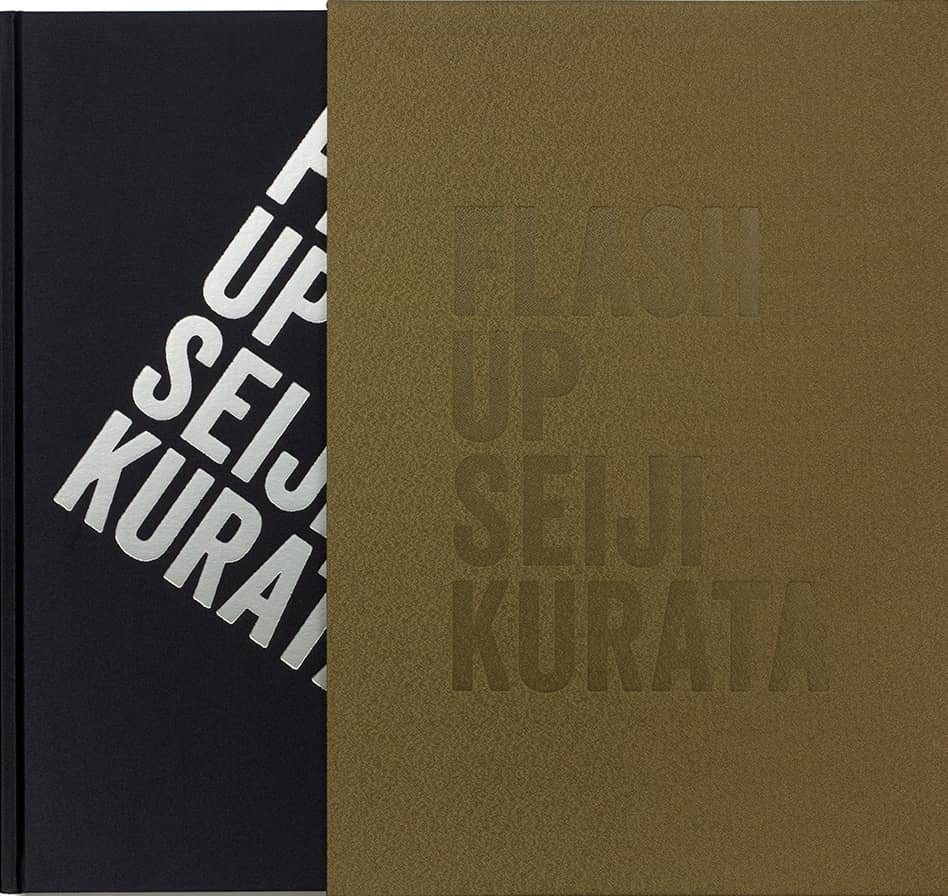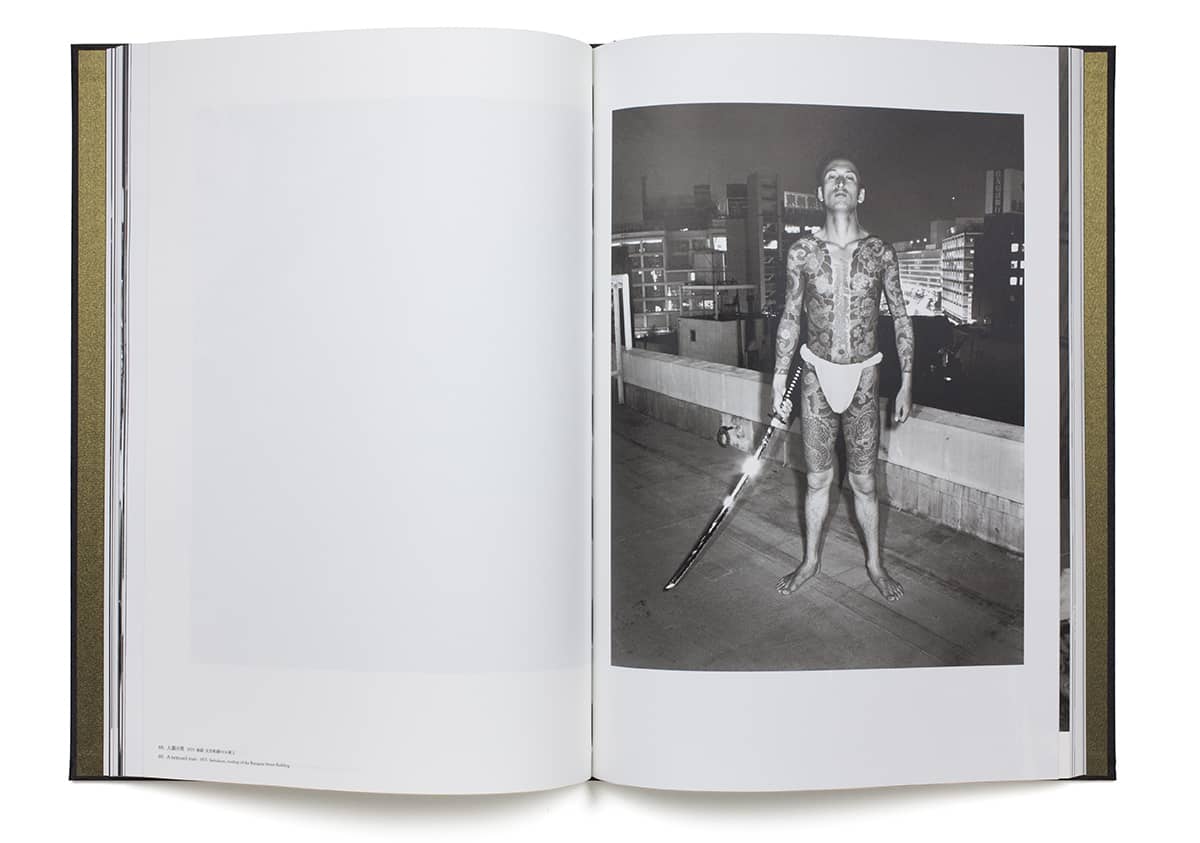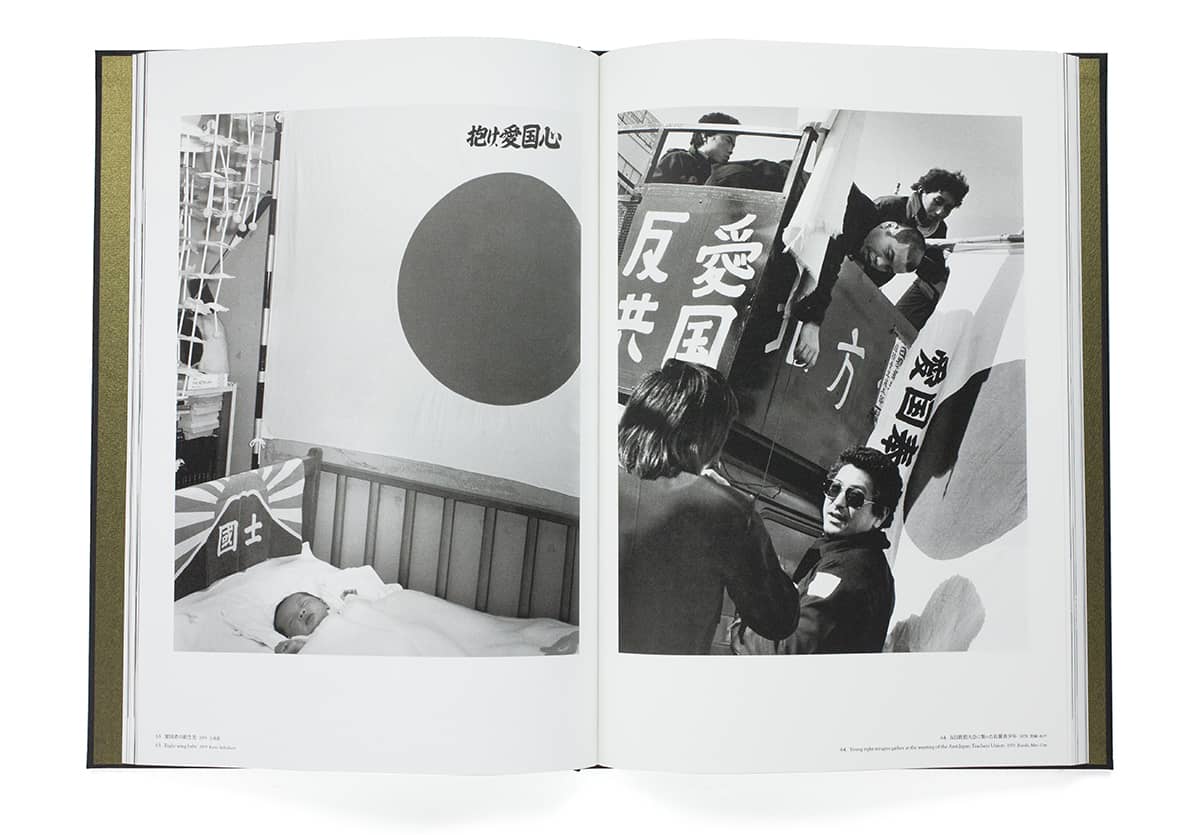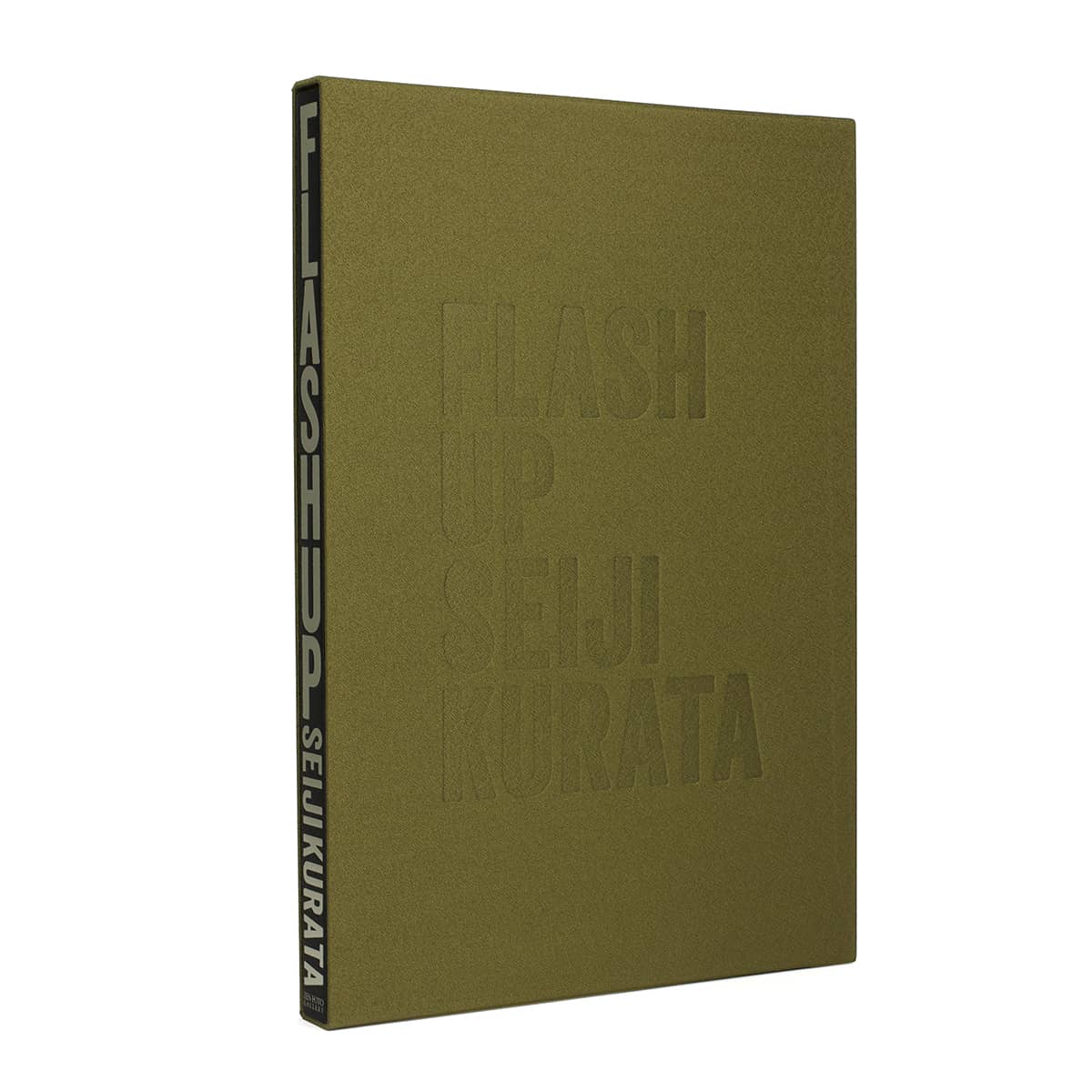Flash Up de Seiji Kurata est l’une des excursions photographiques les plus passionnantes dans les quartiers sordides de Tokyo des années 1970.
Seiji Kurata a commencé sa carrière de photographe en faisant des ateliers avec des maîtres vénérés tels que Daido Moriyama et Araki Nobuyoshi. Il nous emmène dans un voyage à travers le milieu des discothèques d’Ikebukuro et Shinjuku. Il nous montre des aperçus de l’arrogance avec les yakuzas tatoués de la pègre et des violentes bagarres dans la rue Bosozoku. Les victimes d’accidents de voiture contrastent avec des portraits d’hôtesses de boîte de nuit et les salarymen excités qui les tripotent pour de l’argent, il documente des ailiers ultra-droite à Meiji Jingu et en tournée dans la campagne.
C’est le livre qui a valu à Seiji Kurata le prix Ihei Kimura en 1980. Son instinct pour trouver et cadrer des sujets intéressants se traduit par un remarquable document de la vie nocturne de Tokyo. Contrairement aux styles plus expressionnistes de ses professeurs « Provocati » Moriyama et Nobuyoshi, les photos de format moyen de Kurata possèdent une clarté presque journalistique et portent avec elles un air de photographie documentaire sans sacrifier une certaine énergie et un sentiment d’immédiateté. En outre, Kurata est doué pour obtenir juste assez d’informations dans ses photos pour permettre aux histoires de se dérouler dans la tête du spectateur. Prenez son « Fighting after the Disco, 1978, Ikebukuro » comme exemple : un groupe d’hommes apparemment attentionnés entourent une victime en sang qui est aidée, et pendant que le spectateur réfléchit à ce qui aurait pu conduire à tout ce sang versé dans la rue au premier plan, les yeux errent vers le magicien discret et bien habillé (?) dans la foule qui pose et sourit pour la caméra de Kurata comme s’il lui avait ordonné de prendre son portrait.
L’artiste écrit dans la suite de son livre : « Flash Up a un style, une attitude et une conscience qui n’ont pas changé depuis le début. Il a été accumulé au cours de ces quatre années après avoir commencé Street Photo Random en 1975. Surtout, dans la production de ces photographies « instantanées », j’ai cherché des repères dont l’existence était inconnue, tout en ignorant
Flash Up by Seiji Kurata is one of the most exciting photographic excursions into the seedy parts of 1970s Tokyo. Kurata, a natural who began his photographing career doing workshops with revered greats such as Daido Moriyama and Araki Nobuyoshi, takes us on a journey through the nightclub scene of Ikebukuro and Shinjuku, he shows us glimpses of the cocky, tattooed yakuza underworld and of violent Bosozoku street fights, contrasts car crash victims with portraits of nightclub hostesses and the horny salarymen groping them for money, documents ultra-right wingers in Meiji Jingu and on tour in the countryside.
This is the book that earned Kurata the Ihei Kimura award in 1980. His instinct for finding and framing interesting subjects translates into a remarkable document of the Tokyo nightlife. Unlike the more expressionistic styles of his “Provoke” teachers Moriyama and Nobuyoshi, Kurata’s medium-format photos possess an almost journalistic clarity and carry with them an air of documentary photography without sacrificing a certain energy and sense of immediacy. Furthermore, Kurata is talented in getting just enough information into his photos to allow for stories to unfold in the viewer’s head. Take his “Fighting after the Disco, 1978, Ikebukuro” as an example: a group of seemingly caring men surround a bleeding victim who is being helped, and while the viewer is pondering what might have led to all that blood shed on the street in the foreground, the eyes wander to the inconspicuous, well-dressed magician (?) in the crowd who poses and smiles for Kurata’s camera as if he’s ordered him to take his portrait.
Writes the artist in the afterword about his book, “Flash Up has a style, an attitude and consciousness that did not change from the beginning. It was accumulated during those four years after starting Street Photo Random in 1975. Above all, in the production of these “snapshot” photographs I searched for footholds whose existence was unknown, while ignoring the haphazardly distributed noise and information of our everyday world.
This world of photography is amazing. Here is the strangeness of the unknown and the surprise of the unforeseen. Even though it lasts only a moment, this brightly shining band that stretches across the sky, it can tell the story of all existence, all affirmed and all accepted.”
Originally published in 1980, this beautiful 2013 edition by Zen Foto Gallery features large high-quality prints of the original book and two essays by the artist himself in both Japanese and English.
